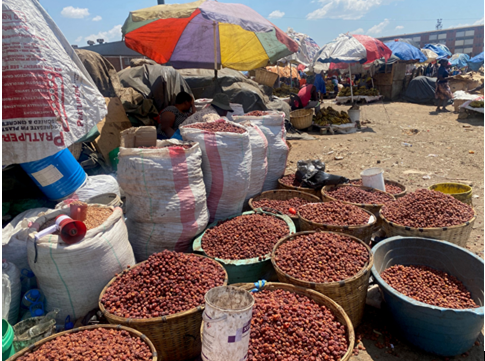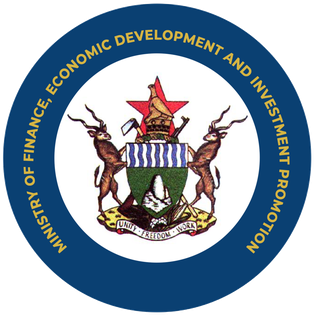
THIS article prompts for the urgent review and revamp of regulatory policies to promote the adoption of current technological advances in the information and communication technologies (ICT) area.
Specifically the combination of artificial intelligence (AI) with the ubiquity of satellite technology have the transformative potential to revolutionise the accessibility of scarce technologies in rural Africa. Imagine a rural person with access to the internet and the related infosphere.
This technological revolution is not just about catching up, it’s about forging a unique path towards a brighter, innovative and competitive future for Africa in various fields, inter alia, education, medicine, agriculture, and energy.
Africa is currently the least digitally connected continent. This scarcity of connectivity is called the digital divide, a phenomenon described as the gap between those who have access to digital technologies and the internet and those who do not.
This divide can be based on various factors such as income level, geographic location, education, and age. The African rural ecosphere fares the worst in the Digital Divide phenomenon.
According to the International Telecommunications Union the average internet usage for Africa is 37% of the population.
Whereas the global average is 67%, with Europe, the Commonwealth of Independent States and the Americas, being the highest between 87% and 91%, respectively. Other regions such as Arab States and Asia-Pacific regions average at 69% and 66%, respectively.
Furthermore the urban and rural statistics show a further connectivity gap as follows: African urban connectivity is reported at 57% while the rural is at 23%. Compare with the rest of the world at an average of 81% urban and 50% rural. What is even more telling is the contrast with Europe, where the urban connectivity is at 92% and the rural is at 88%.
- Public relations: How artificial intelligence is changing the face of PR
- Queen Lozikeyi singer preaches peace
- Ginimbi assets go missing
- Public relations: How artificial intelligence is changing the face of PR
Keep Reading
In other words, the rural connectivity in Europe is far much higher than Africa’s urban connectivity.
This is sad, but that is about to change. Well, that is if African economies undertake the collaborative strategies for policy revamp and entrepreneurial audacity to bring about seismic transformation.
How? Low Earth Orbit (LEO) satellites are changing the connectivity game.
By orbiting closer to earth, LEOs offer high-speed internet access to remote areas, enabling both the urban and the rural areas to have access to the internet.
Combine this with the potential of access to AI then you have a winning formula to ensure the advent of African innovation in areas such as:
- E-education: AI-powered online learning platforms can reach students in far-flung villages, empowering them with knowledge and skills.
- Telemedicine: Satellite-enabled video consultations connect rural communities with healthcare professionals, improving access to critical medical services.
- Precision agriculture: AI, combined with satellite imagery, helps farmers to optimise crop yields and resource use, boosting food security.
To reach such transformative potential, revolutionary developmental strategies are required at the collaborative public-private-partnership (PPP) level, at the individual country level, at the regional African level and at the global level.
The first layer of the revolutionary development strategies is the regional PPP collaboration for the development and launching of satellite services substantially financed by African equity so that a quantum portion of the returns on investment remains on the continent for reinvestment in quest for sustainable development.
LEO satellite services can be used by existing mobile network operators for backhauling traffic from terrestrial 4G and 5G base stations.
International equity and development partnerships are essential for service provision as there are already developers who have commissioned or are about to commission LEO satellite services.
In Zimbabwe, Starlink is recently reported to have been given the regulatory go-ahead to launch, and OneWeb, a Liquid Intelligent Technologies and Eutelsat partnership for the African market, is in sight.
There is need for the African regulators to enable a conducive environment for healthy competition in the area of LEO satellite service provision.
The digital divide is exacerbated by affordability of devices, usage tariffs and availability of electricity.
Therefore, the second layer of development is to ensure affordability of access in terms of both devices and usage backed by availability of solar power.
There is ample reason for African entrepreneurs to synergise in manufacturing low cost devices to be used in rural areas.
Furthermore, government policy should look at promoting access especially for rural educational institutions through bandwidth subsidies and solar power.
The third layer of development is digital literacy in which the collaboration can be mandated to launch programmes to equip citizens with the skills to use the internet effectively and safely.
This includes basic computer skills, online safety awareness, ethical considerations and critical thinking for evaluating information online.
African entrepreneurs and academia can develop AI training programmes for empowering rural African communities with the tools and knowledge to become active participants in the AI revolution.
By focusing on practicality and addressing local challenges, AI for Africa can unlock a future of innovation and sustainable development across the continent.
Internet content is largely Euro-centric. The fourth layer of development is, therefore, local content development.
African researchers and entrepreneurs can jointly innovate to develop AI solutions tailored to the continent’s needs and thus minimise the biased narrative on Africa’s past, present and future.
A significant development is that the European Union has produced the EU AI Act, the first-ever legal framework for AI enacted at a regional level.
It establishes a set of regulations aimed at ensuring the responsible development and use of AI technologies within the EU.
The African region under the African Union can leverage on EU AI Act in order to adapt its principles to the specific context and priorities of the African continent.
The call to action here is collaboration between African political, entrepreneurial and academic operatives to bring about be synergy of joint effort which will be potentially transformative and, hence, exponentially beneficial to the underserved communities of Africa, under a policy drive of “Leave no one behind”. The digital divide will be no more and AI knowledge will be commonplace.
- Tororiro Isaac Chaza is a certified project management professional with Project Management Institute. He writes here in his personal capacity.











